We’re more than excited to share with our community this Product Update #4! On our mission to make collaborative process efficient at scale, we’re announcing the Connected Apps capability to help you bring efficient collaborative work where the process is handled. Following the Salesforce and Teams integration that we’re introducing this month, soon with nBold you’ll be able to connect Microsoft Teams to other CRMs platforms, Project Management apps, ERPs and more.
In addition to this major component, we’re also sharing significant improvements to our platform capabilities. Developers can now integrate with nBold to enhance their own apps with our Collaborative Process engine with webhooks and additional capabilities on the nBold Rest APIs.
Finally, we’re sharing all the improvements we made in the past few weeks to support additional Collaboration Template features such as the Calendar tab, and new Governance Policies including Sensitivity Label support, Minimum number of Owners and Members, and more!
Please join us on the Product Update #4 Webinar, where you’ll see everything in action!
In English: May 12th 2021 – 11:00 AM (EST) Join the Webinar
In French: May 12th 2021 – 11:00 AM (CEST) Join the Webinar
- 💼 CRM Collaboration Process: Salesforce with Microsoft Teams
- ✅ Explore more Connected Apps
- 📆 Channel Calendar tab supported in templates
- 🔀 Power Automate in action
- 📢 Additional Developer Capabilities
- 👩 Minimum Number of Owners and Members at the team creation
- 📝 Expanding Naming Convention
- 🎯 Expanding Audience Targeting rules
- New supported languages: Italian and German
- 👩👨💻 RBAC – Role Based Access Control
- 💥 Compliance tab – Sensitivity Labels
- 🔓 Microsoft Teams App SSO Support
- 🔰 Microsoft 365 Certified
💼 CRM Collaboration Process: Salesforce with Microsoft Teams
One of the most expected features is now available with nBold: Salesforce and Microsoft Teams enhanced integration. As our mission is to improve your collaborative processes, now with nBold for Salesforce you will be able to collaborate on sales deals or on accounts effectively across the entire organization.
Account Collaboration with Teams
Account Managers need to develop relationships with key customers and partners. To do so, they collaborate with many people from different departments: marketing managers, product developers, legal departments, etc. This way, they offer the best experience to customers. And an efficient collaboration around a customer is key to drive increasing sales results.
Now you can fully collaborate with your peers inside a team connected to an Account in Salesforce. For a new Account created in Salesforce, you’ll get a new team packed with files, folder structure, tasks for account planning, guidelines from the intranet… Any content supported with our Collaboration Templates.

Get a fully created team from the Key Account Management template with private and standard channels, pre-built Planner, tabs with apps, files and folders, and much more.

Moreover, during the template creation, Governance Policies applies, such as:
- Naming Convention to get teams created with a right name
- Membership Policies to automatically invite permanent owners and members to the created team
And it’s easy to set up!
1. Build a Key Account Management Teams Template with files, folders, tasks, etc. Then configures the right governance policies: naming convention, permanent membership…

2. Configure your Salesforce connection
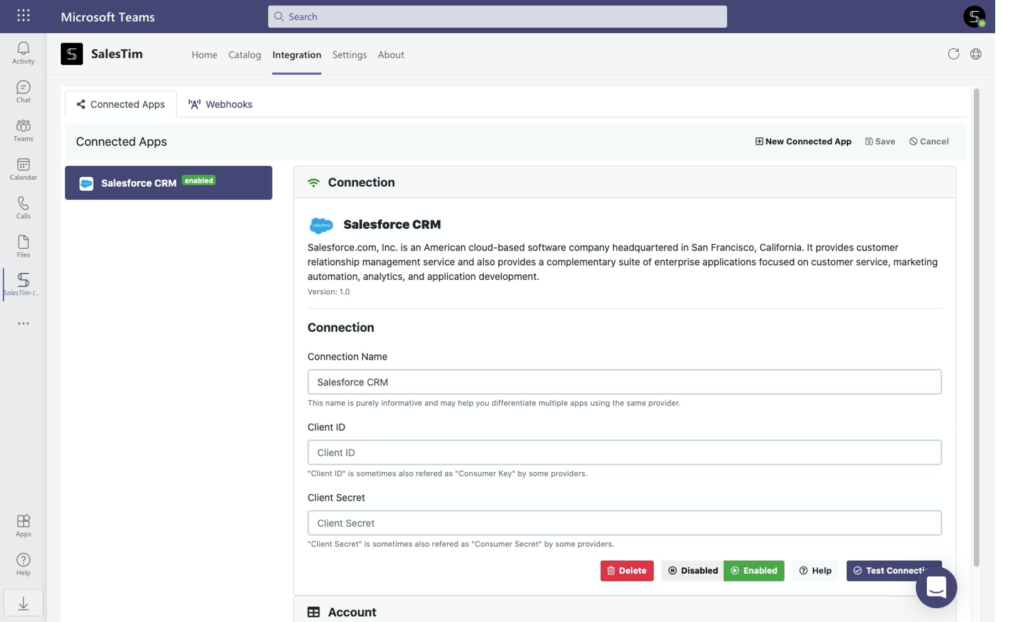
3. Define the syncing options

4. Create a new Account in your Salesforce environment.
5. Automatically get a new team created from your Key Account Management template.
Moreover, you can add an option for the deleted Accounts in Salesforce. With this option, you can automatically delete or archive an Account team in Microsoft Teams when an Account was deleted in Salesforce

Finally, filter the Account creation or build any naming convention for your teams and channel with additional properties from Salesforce. For example, automatically create teams from the Key Account Management template depending on the account’s industry, annual revenue, number of employees, and so on.

Deal Collaboration with Teams
Sales reps use Salesforce to manage sales funnels and track performance. At the same time, they need to collaborate with colleagues from other departments who may not have access to the Salesforce platform. To avoid information loss and improve collaboration, you’re now able to build a single workspace by integrating Salesforce and Microsoft Teams.
Collaborate with Microsoft Teams on any sales deal that is in Salesforce Sales Cloud with a corresponding team or channel in Microsoft Teams. Get an automatically created team each time you create a new Opportunity at Salesforce.
How does it work?
- Build your own Deal Collaboration Teams template with channels, tabs with apps, files and folders, and other content.
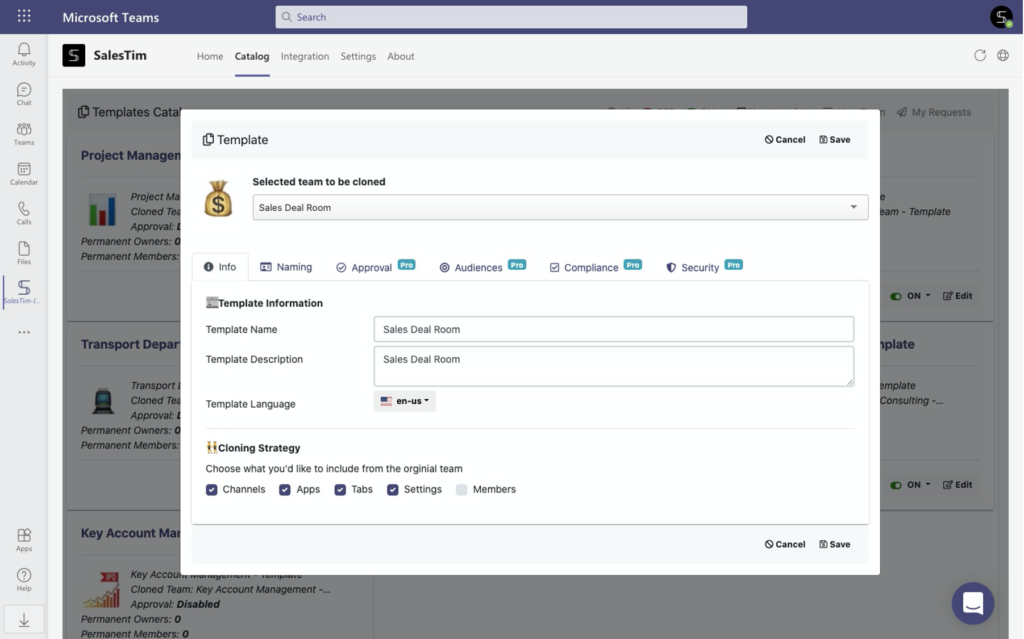
2. Define the syncing options

- Create a new Opportunity in Salesforce.
- In a few seconds get an automatically created team from your template with all the content: copied channels, filed and folders cloned, pre-built tabs with apps, and much more
Don’t need to create an entire team for a single deal? Alright, with nBold for Salesforce you can automatically create a new channel in the right team! Start conversations, share updates, and track progress in a structured workplace.

With the option “In a specific team”, the channel will be created into a specific team in your Teams environment, for example “Sales Deal Room”

With the option “In the team of the parent entity”, the channel will be created into the parent Account team
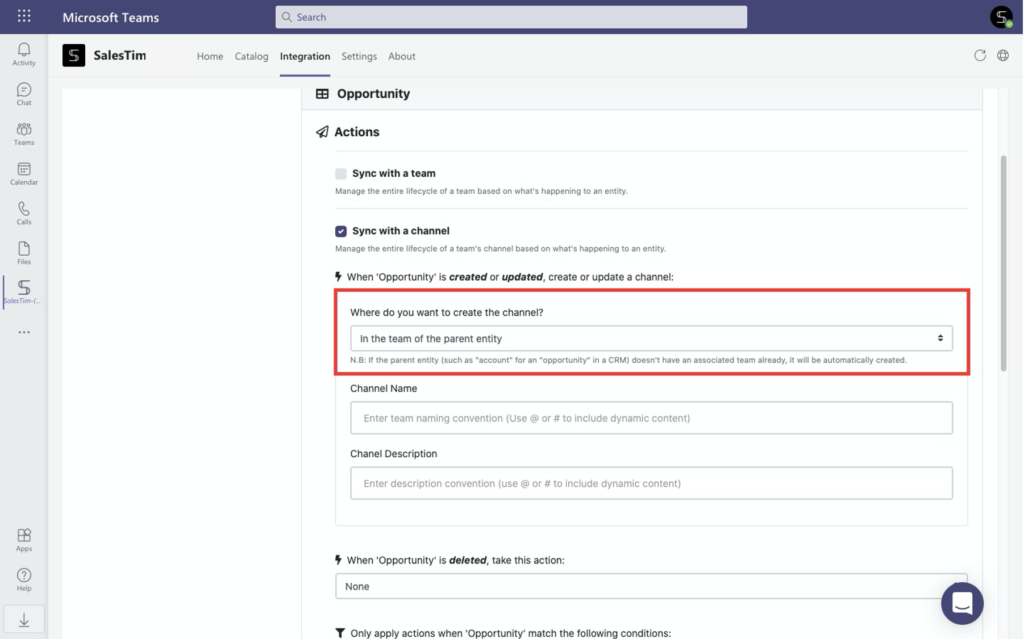
Moreover, manage naming convention for your channels based on data from Salesforce and get automatically created channel with a right name

And don’t forget to set up the rules for deleted Opportunities and additional properties if you don’t need to create teams or channels for each of your new Opportunity in Salesforce
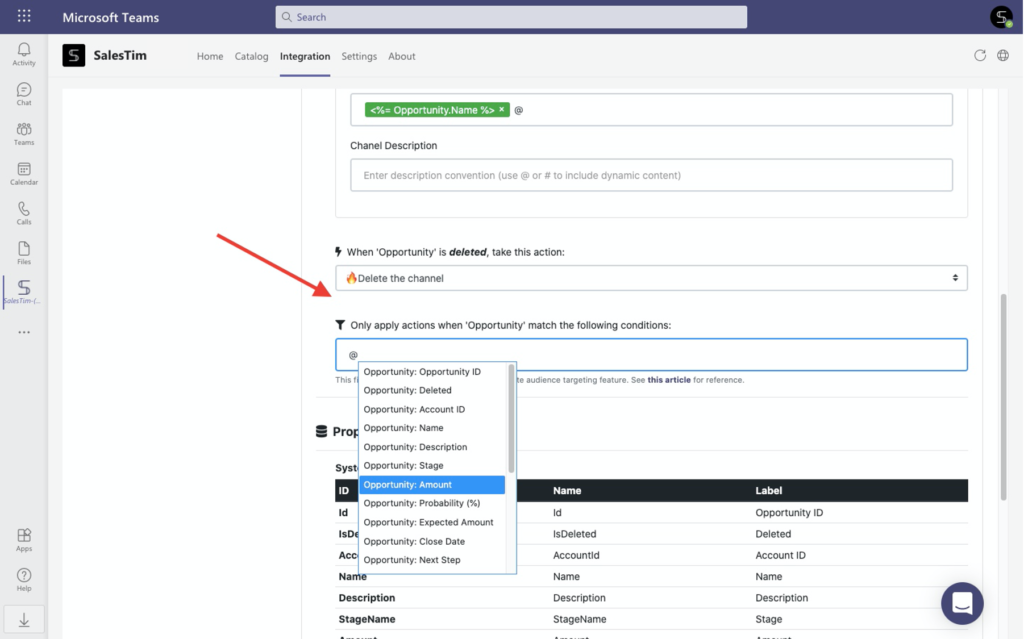
With nBold for Salesforce, there is no need to juggle between apps or to move manually all information from Salesforce to Teams. Save time and improve your collaboration on any deal.
Join our Webinar to learn more about Salesforce and Microsoft Teams
collaboration with Teams templates
In English: May 12th 2021 – 11:00 AM (EST)
Join the Webinar
In French: May 12th 2021 – 11:00 AM (CEST)
Join the Webinar
✅ Explore more Connected Apps
Soon you’ll be able to connect Teams to other apps to enhance your processes where they’re handled. And not just Salesforce! You’ll be able to connect to apps such as Dynamics 365, HubSpot, MailChimp, Zoho CRM, and more…

📆 Channel Calendar tab supported in templates
How many meetings do you have with your team? Add Channel Calendar tab to help teammates manage meetings during the working day. Moreover, with nBold Templates Technology you can scale it organization-wide.
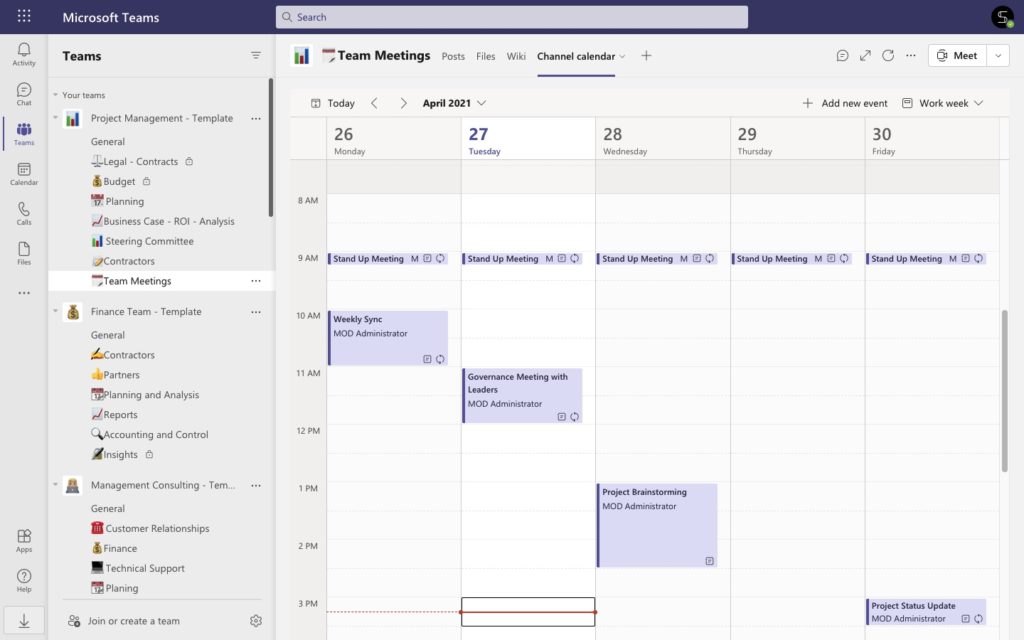
As you may know, at nBold you can create templates with pre-built tabs with apps. For instance, Planner, Yammer, SharePoint, Communities, Forms, and so on. And now Channel Calendar is available in templates as well.
Learn more about Templates with Apps.
🔀 Power Automate in action
Using Power Automate to streamline workflows? Explore nBold connector to automate team creation and improve your collaborative processes at scale. Read here how to connect nBold to Power Automate.
Explore the full list of nBold Triggers:
- When a new team creation approval is requested
- When a new team is created
- When a team creation is approved
- When a team creation is rejected
- When a team is provisioned using a template

Here is the full list of nBold Actions:
- Approve a team creation request
- Archive a team
- Create a new team based on a template
- Create a new team channel tab
- Create a new team channel
- Delete a team
- Get a team
- Get my teams templates
- Get team channel tabs
- Get team channels
- Get the primary channel of a team
- Invite a team member
- Reject a team creation request
- Unarchive a team
- Get all the team templates from your catalog
- Get information about a job
- Get my sensitivity labels
Let’s look at one example of how you can automate team creation processes. Suppose you have an Excel spreadsheet with all your key customers. And now you need to quickly create dozens of teams for each of them. Using Power Automate and nBold connector you can in just a few seconds create teams from Excel using a specific template.
Read more about team creation from the templates with Power Automate.
Moreover, with nBold connector you can create templates with tabs with your own internal apps, automatically add managers, perform multiple-stage approval processes, and much more. The use cases are endless! And we will talk about some of them during our Product Update Webinar 😉
Join our Webinar to learn more
In English: May 12th 2021 – 11:00 AM (EST)
Join the Webinar
In French: May 12th 2021 – 11:00 AM (CEST)
Join the Webinar

To learn more, follow nBold blog. There, we’ll post a lot of useful information and tips about Power Automate advanced capabilities.
📢 Additional Developer Capabilities
We know you want to focus on the value of your product and business processes without the complexity of integrating with Microsoft Teams, and we’re working hard to make your integrations easier with nBold.
Webhooks
Webhooks enable organizations to trigger automation outside of the nBold platform, for example in a custom application, or in an automation tool such as Power Automate or Zapier. Visit our Tech Center to learn more.
And now from the upcoming integration tab, you will be able to create webhooks that will let you perform any action after a team is provisioned from the nBold templates. Later we enhance the capabilities to get webhooks on more events.

New endpoints in our REST APIs
With nBold APIs you’re able to automate Microsoft Teams governance and improve business process across the organization. Here are some basic capabilities:
- Create powerful self-service templates for Microsoft Teams
- Deploy Microsoft Planner at scale with plan templates
- Create a custom approval process for your team provisioning requests
- Automatically apply governance policies across all your teams
- Integrate a custom in-house and LoB apps with Microsoft Teams, and so on
Explore the new endpoints in our APIs from our technical documentation here.

New SDKs available
You can use nBold API SDKs to simplify the process of building high-quality, efficient, and resilient applications that access the nBold API. Now Node.js SDK and PowerShell module are available for integration with nBold APIs.

👩 Minimum Number of Owners and Members at the team creation
Sometimes when users create teams, they add only one owner or add no other members. This type of teams leads to Teams sprawl and affect productivity and collaboration. With nBold Permanent Owners and Members policy, you can manage your team members and enforce the right people being added into a team. But sometimes, especially in a high-scale motion, you need to make sure that several owners and/or members are added to each team, without knowing in advance who they are when you define your template.
We’ve recently introduced a new capability called “Mandatory Owners and Members”. This lets you add a policy to make sure you have the right number of Owners and/or Members when the team is created.

Explore how it works in our Help Center
📝 Expanding Naming Convention
From the beginning of our journey, our customers were able to set up Fixed and Dynamic Naming Convention with the user profile information (Azure AD Attributes). With this feature, you can enforce a consistent naming strategy for teams crated by users in your company.
Until now, you were only able to add Standard Attributes from Azure AD such as user’s country, city, job title, and more.
And now we’re expanding this capability to add any Custom Attribute from your Active Directory, such as On-premises attributes or 3rd Party app attributes. These could be your internal Department ID, security groups, and much more depending on your use case.
As a result, you will get newly created teams with a clear naming structure that fits your organizational needs. Your end-users will simply identify the function of the team, geographic region, membership, team’s creator, and so on.

Learn more about Naming Convention for Microsoft Teams.
🎯 Expanding Audience Targeting rules
In some scenarios, you want to make sure only a limited group of people have access to a specific template and all the content that it contains. For example, R&D teams store sensitive and confidential data, so you want only people working on R&D projects have access to them.
This can be achieved through audience targeting. It allows to define who will be able to see and use your templates. Audience targeting rules are a combination of tags that are evaluated against a user profile to decide if a template is shown or not. Thus, the Templates Catalog will be different from one user to another.
Like with Naming policies, you can use the Office 365 user profile to build your audience targeting rules. We support now Custom Attributes in addition of the standard ones.

In addition, you’re able to set up targeting rules based on Group Membership in Active Directory. This feature allows you to define who can use your templates depending on their membership in Microsoft Teams, Outlook groups, security groups, email distribution lists, and so on.
Read more about Targeting Audience for Microsoft Teams templates
New supported languages: Italian and German
We’re expanding the number of languages supported in the app. In addition to English, French, and Spanish we now support Italian and German.

👩👨💻 RBAC – Role Based Access Control
You no longer need to be an Admin to manage templates. Any user from your Office 365 tenant can be defined as a Template Catalog Administrator.
Just search for the required user in the Roles Tab in nBold app. In only a few seconds this user will have access to the Catalog Tab with all features.
Explore distinct roles that are now available with nBold:
- Catalog Managers – can create, update, and delete templates from your corporate catalog.
- Integration Managers – can create, update, and delete webhooks and configure connected apps.
- Change Managers – can prepare for the upcoming changes by testing and validating recent updates before they are released to all the users in the organization.

💥 Compliance tab – Sensitivity Labels
Collaborating with others both inside and outside the organization? Manage sensitivity labels during template creation and empower your team’s privacy and security.
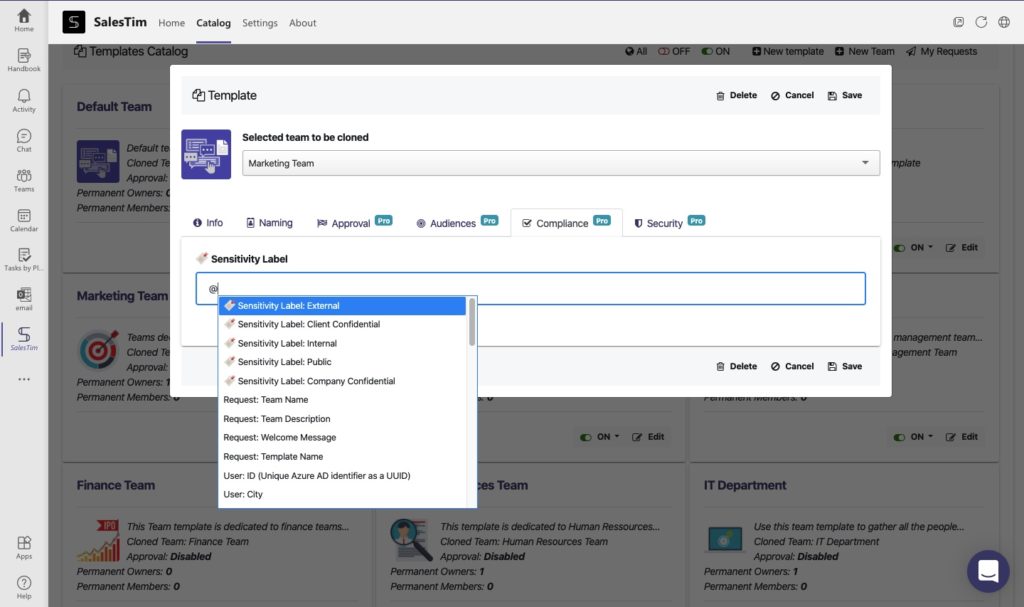
Set up your own sensitivity labels from the Admin center or get inspired by what we use at nBold:
- 📢 Public (Information that is not confidential and can be made public without any material implications)
- 🔑 External (Information that is not confidential and can be shared externally without any material implications)
- 🔐 Internal (Information is restricted to approved internal access and protected from external access)
- 💥 Client Confidential (Information received from clients in any form for holding or processing by ourselves)
- 🔥 Company Confidential (Information collected and used by us in the conduct of our business to employ people, to log and fulfill client orders, and to manage all aspects of corporate finance)
Read more about Sensitivity Labels in our Tech Center.
🔓 Microsoft Teams App SSO Support
No more wasting time on sign-in process!
Now nBold supports Microsoft Teams App SSO capability. This means that users no longer must click on the sign-in button. Everything will be done automatically! Read more in our Tech Center.
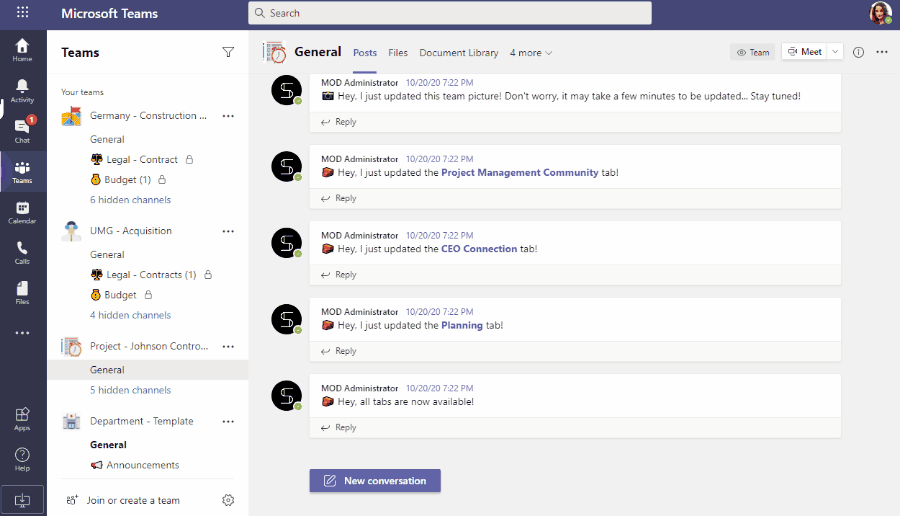
🔰 Microsoft 365 Certified
We’re excited to share with you our Microsoft 365 App Certification. It acknowledges that nBold has reached the highest level of security and compliance required for an enterprise-grade app integrated into the Microsoft 365 ecosystem.
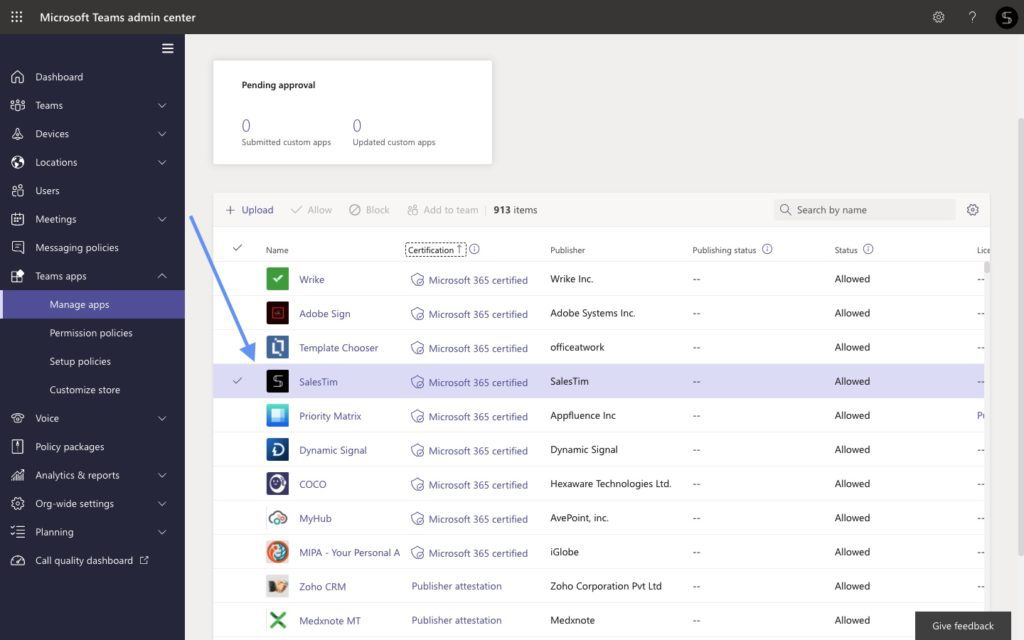
In fact, only a small number of apps in the Microsoft Teams store have obtained this certification. And nBold is proud to join their ranks.
The Microsoft 365 App Certification is comprised of four main domains:
- Application Security Domain
- Operational Security Domain
- Data Handling Security and Privacy Domain
- Optional External Compliance Framework Domain
To explore what we did to accomplish the M365 App Certification read our blog.
Join our Webinar to learn more about Salesforce and Microsoft Teams
collaboration with Teams templates
In English: May 12th 2021 – 11:00 AM (EST)
Join the Webinar
In French: May 12th 2021 – 11:00 AM (CEST)
Join the Webinar
VisitnBold Tech Center to learn in detail all technical documentation.
Or Schedule a Demo with us and explore nBold App.
